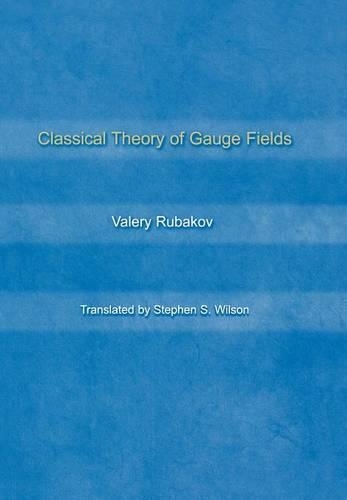
Classical Theory of Gauge Fields
(Hardback)
Publishing Details
Classical Theory of Gauge Fields
By (Author) Valery Rubakov
Translated by Stephen S. Wilson
Princeton University Press
Princeton University Press
6th August 2002
United States
Classifications
Professional and Scholarly
Non Fiction
530.1435
Physical Properties
Hardback
456
Width 152mm, Height 235mm
794g
Description
Based on a highly-regarded lecture course at Moscow State University, this is a systematic introduction to gauge field theory prior to the advanced study of quantum mechanics. Though gauge field theory is typically included in courses on quantum field theory, many of its ideas and results can be understood at the classical or semi-classical level. Accordingly, this book is organized so that its early chapters require no special knowledge or quantum mechanics. Aspects of gauge field theory relying on quantum mechanics are introduced only later and in a graduated fashion. The book begins with the basic concepts on which gauge field theory is built. It introduces gauge-invariant Lagrangians and describes the spectra of linear perturbations, including perturbations above nontrivial ground states. The second part focuses on the construction and interpretation of classical solutions that exist entirely due to the nonlinearity of field equations: solitons, bounces, instantons, and sphalerons. The third section considers some of the interesting effects that appear due to interactions of fermions with topological scalar and gauge fields. Mathematical digressions and numerous problems are included throughout. An appendix sketches the role of instantons as saddle points of Euclidean functional integral and related topics. The text should be suitable as an advanced undergraduate or beginning graduate text - and a starting point for anyone seeking to understand gauge fields.
Reviews
"Classical Theory of Gauge Fields is indeed ... unique ... and without alternative for all those who want to immerse themselves in this particular area of theoretical physics."--H. Hogreve, Mathematical Reviews
Author Bio
Valery Rubakov is Professor of Physics at Moscow State University. A Member of the Russian Academy of Sciences, he was awarded its A.A. Friedmann Prize in 1999.
